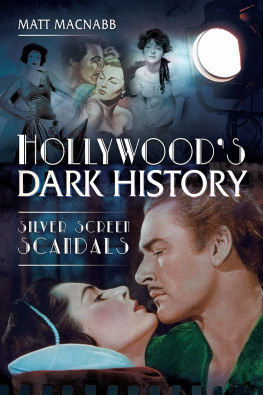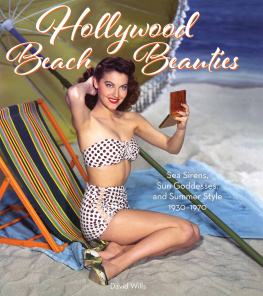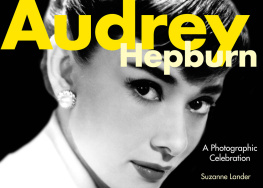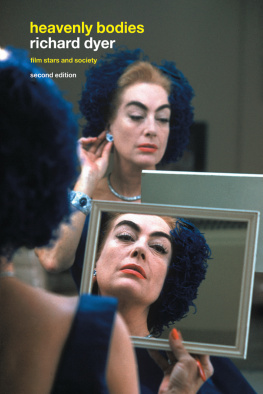
Precocious Charms
The publisher gratefully acknowledges the generous support of the Humanities Endowment Fund of the University of California Press Foundation.
Precocious Charms
Stars Performing Girlhood in Classical Hollywood Cinema
Gaylyn Studlar

UNIVERSITY OF CALIFORNIA PRESS
BerkeleyLos AngelesLondon
University of California Press, one of the most distinguished university presses in the United States, enriches lives around the world by advancing scholarship in the humanities, social sciences, and natural sciences. Its activities are supported by the UC Press Foundation and by philanthropic contributions from individuals and institutions. For more information visit www.ucpress.edu.
Materials in this book have appeared in different form in three previously published articles: Oh, Doll Divine: Mary Pickford, Masquerade, and the Pedophilic Gaze was originally published in Camera Obscura 16, no. 3.48 (2001): 197-227 Gaylyn Studlar; Velvet's Cherry: Elizabeth Taylor and Virginal English Girlhood appeared in Virgin Territory: Representing Sexual Inexperience in Film, ed. Tamara Jeffers McDonald (Detroit: Wayne State University Press, 2010), 15-33. Copyright 2010 Wayne State University Press. Used with permission by Wayne State University Press; 'Chi-Chi Cinderella: Audrey Hepburn as Couture Countermodel was included in Hollywood Goes Shopping, ed. David Desser and Garth S. Jowett (Minneapolis: University of Minnesota Press, 2000): 159-78.
University of California Press
Berkeley and Los Angeles, California
University of California Press, Ltd.
London, England
2013 by The Regents of the University of California
Library of Congress Cataloging-in-Publication Data
Studlar, Gaylyn.
Precocious charms : stars performing girlhood in classical Hollywood cinema / Gaylyn Studlar.
p. cm.
Includes bibliographical references and index.
ISBN 978-0-520-25557-9 (cloth : alk. paper)
ISBN 978-0-520-27424-2 (pbk. : alk. paper)
eISBN 9780520955295
1. Girls in motion pictures. 2. Teenage girls in motion pictures. 3. Motion picturesUnited StatesHistory 20th century. 4. Child actorsUnited StatesHistory20th century. I. Title.
PN1995.9.G57S65 2013
791.43 6523dc232012029630
Manufactured in the United States of America
21 20 19 18 17 16 15 14 13
10 9 8 7 6 5 4 3 2 1
In keeping with a commitment to support environmentally responsible and sustainable printing practices, UC Press has printed this book on Rolland Enviro100, a 100% postconsumer fiber paper that is FSC certified, deinked, processed chlorine-free, and manufactured with renewable biogas energy. It is acid-free and EcoLogo certified.
In memory of my parents, Irene and Joe Studlar, with gratitude for their love and for the sacrifices they made so that I could be an educated woman
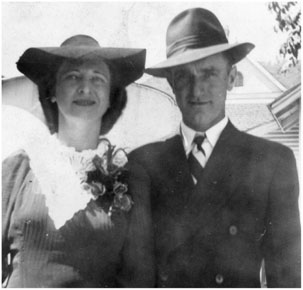
I suppose she must have looked rather delightful, for Mrs. Darling put her hand to her heart and cried, Oh, why can't you remain like this for ever!
J.M. Barrie, Peter Pan and Wendy
Contents
Illustrations
Acknowledgments
The publication of this book was dependent on many institutions and on many people. Dean Gary S. Wihl of the College of Arts and Sciences, Washington University in St. Louis, provided a much-appreciated book subvention. The University of Michigan provided generous funds and time off for my research. I owe many colleagues with whom I worked at the University of Michigan special thanks for creating a supportive environment. I especially want to thank Giorgio Bertellini, Jim Burnstein, Susan Douglas, Geoff Eley, Johannes Von Moltke, Eric Fredericksen, Bambi Haggins, Donald Lopez, Lucia Saks, and Terri Sarris. Katrina Mann ably served as my summer research assistant in the initial stage of this project. Phil Hallman made it possible for me to watch every Deanna Durbin film. Mary Lou Chlipala, Connie Ejarque, and Sue Kirby were cheerleaders for getting the book on the girls finished.
Special thanks go to the staff of the Margaret Herrick Library, at the Academy of Motion Picture Arts and Sciences, Douglas Fairbanks Study Center, and particularly to Barbara Hall and Janet Lorenz, who were wonderfully helpful and knowledgeableas always. The Academy of Motion Picture Arts and Sciences allowed me to publish photographs of Mary Pickford from its core collection. Steve Wilson and the staff of the Harry Ransom Humanities Center provided assistance with the labyrinth of riches that is the David O. Selznick Collection. Permission to publish materials from that collection, including two photographs, has been granted by the Harry Ransom Humanities Center, University of Texas, Austin. I thank the Bridgeman Art Library for permission to publish reproductions of Sir John Everett Millais's Cherry Ripe and The Woodman's Daughter. Elisa Marquez kindly helped me secure publications rights from the Associated Press for a photograph of Deanna Durbin.
I wish to express gratitude to Matthew Bernstein, Janet Staiger, and Susan White for providing opportunities to publicly present my work in progress. Jennifer Bean and Diane Negra improved the chapter on Mary Pickford with their suggestions, and Tamara Jeffers McDonald did the same for the Elizabeth Taylor chapter. Virginia Wright Wexman was an astute and helpful manuscript reviewer. My colleagues at Washington University in St. Louis, including Bill Paul, Philip Sewell, and Todd Decker, took the time to chat about various questions raised by this project. They have improved this book by sharing their knowledge on topics as varied as film exhibition practice, radio programming in the 1930s, and tap dance. Elizabeth Childs has been an inspiration and a calming influence. Bradley Short helped me secure needed research materials. Mary Francis, my editor at the University of California Press, has been a model of patience while offering terrific advice. My gratitude goes to Constance Goodwin for more than forty years of friendship and professional encouragement and to my brother Donley Studlar for his enthusiasm for film.
Finally, I want to thank my husband, Thomas Haslett, for being funny, generous, supportive, and a wonderful cook.
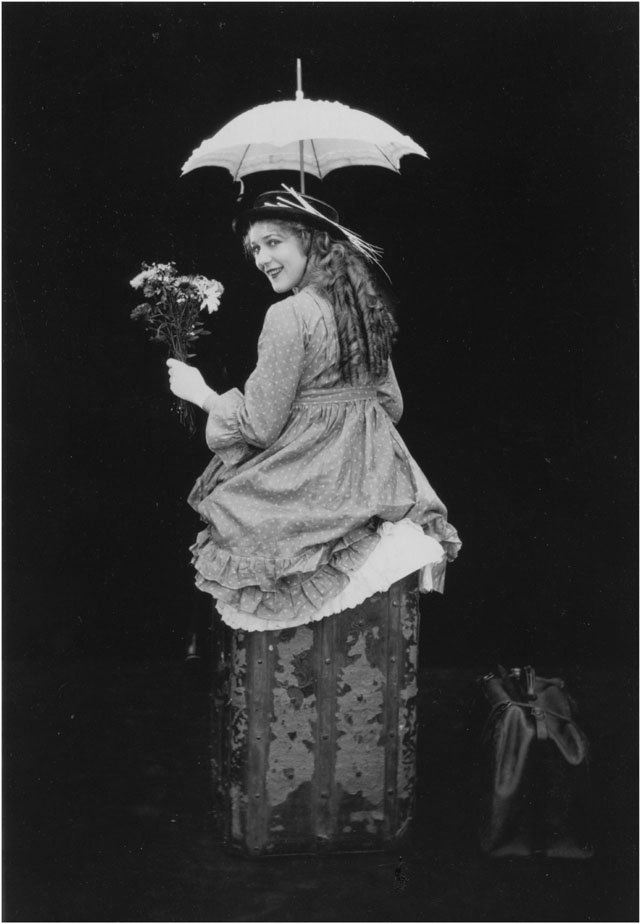
FIGURE 1. Studio portrait of Mary Pickford for Rebecca of Sunnybrook Farm (dir. Marshall Neilan, 1917). Courtesy of the Academy of Motion Picture Arts and Sciences.
Introduction
This book is about stardom and femininity and how six female stars figured in the inscription of girls and girlhood by Hollywood between the years 1914 and 1967. In this discussion I stress the importance of juvenation in the performances of girlhood by Mary Pickford, Shirley Temple, Deanna Durbin, Elizabeth Taylor, Jennifer Jones, and Audrey Hepburn.
What is juvenation? Referencing contemporary news media, John Hartley defines juvenation as the creative practice of communicating with a readership via the medium of youthfulness.
Using Hartley's identification of juvenation as a process important to understanding media representation of age as a springboard, I take the notion of juvenation in another direction, focusing on female stars during Hollywood's classical, studio-dominated era. I explore Hollywood's investment in creating fictions of girlhood that were defined by a different medium (film) in a different historical period (roughly the first half of the twentieth century), and via a different industry (American filmmaking). Given these differences, we cannot expect that performances of girlhood or the display of juvenile attributes by the female stars I analyze created the exact equivalent of what Hartley describes. In fact, some of these film representations could be seen as promulgating fantasies of girlhood with idealized or even Utopian components. Nevertheless, the idea that we should investigate juvenation as a process linked to feminization and eroticization, and sometimes even to victimization and pathology, is a powerful one.
Next page


